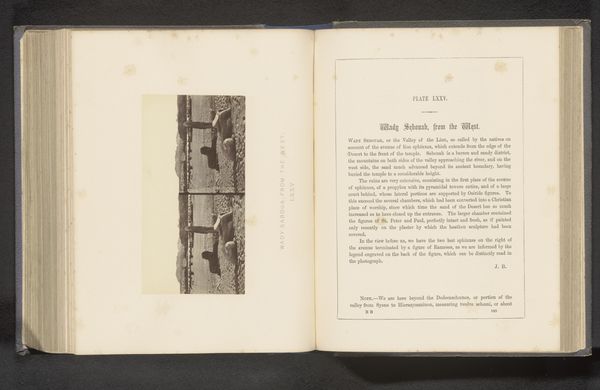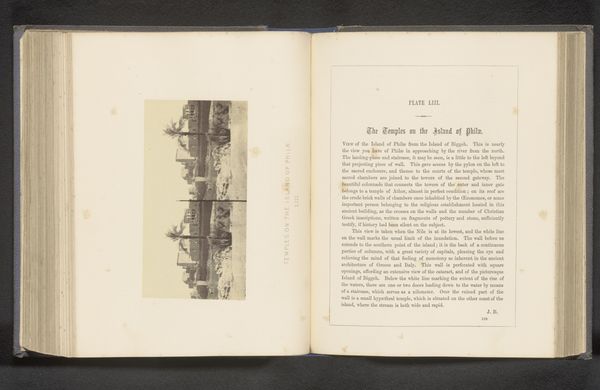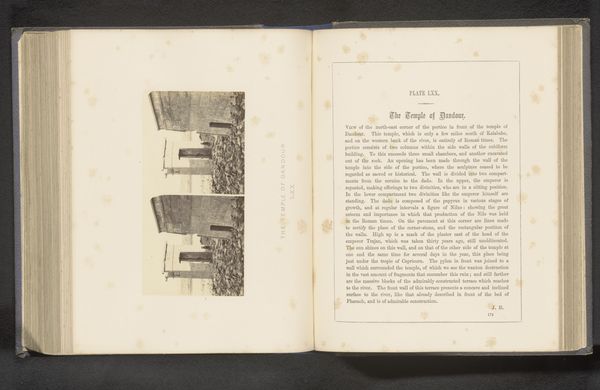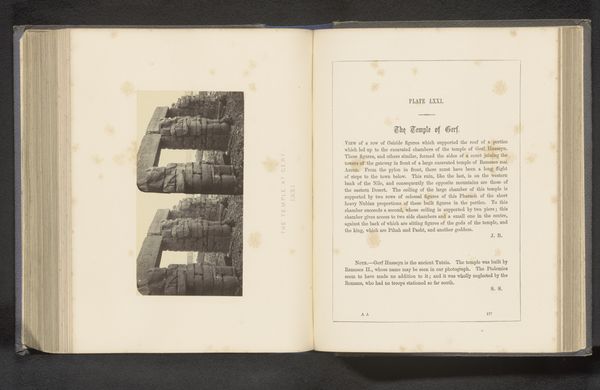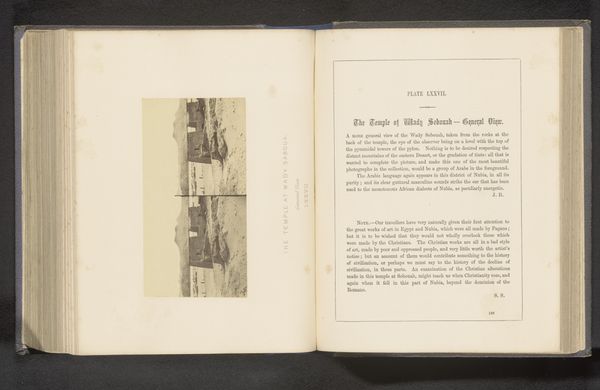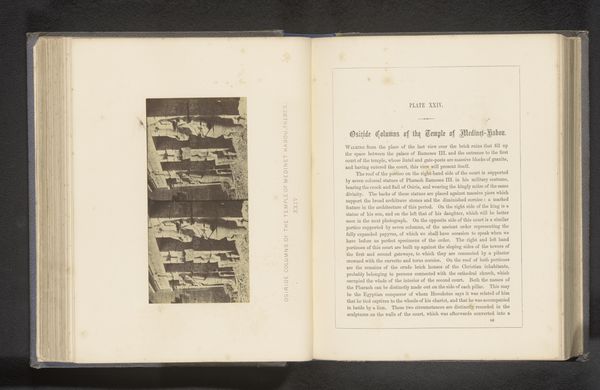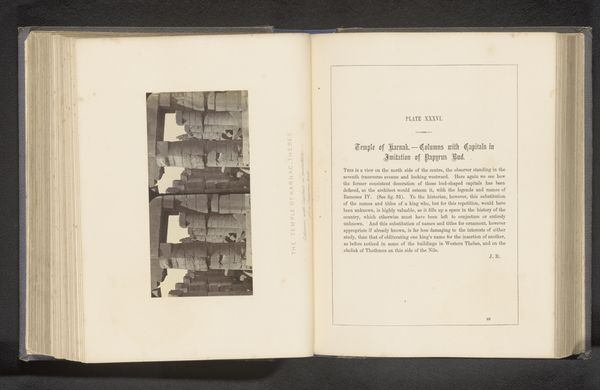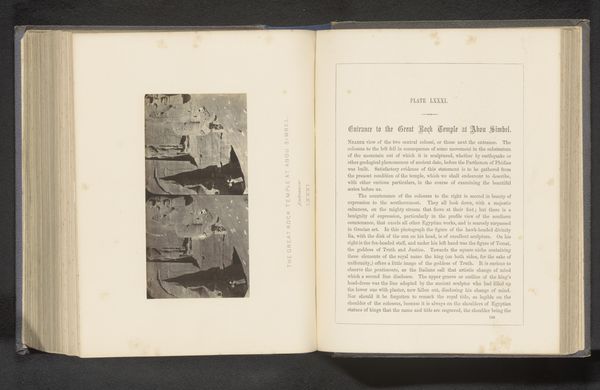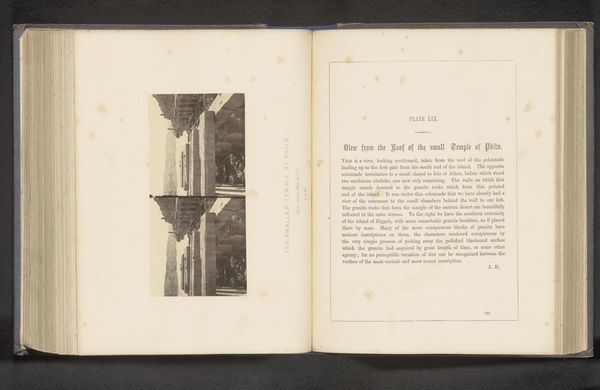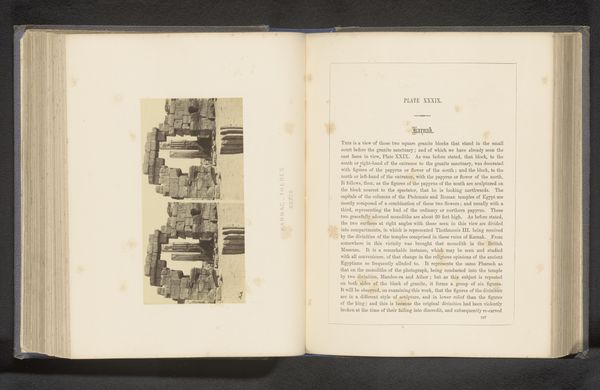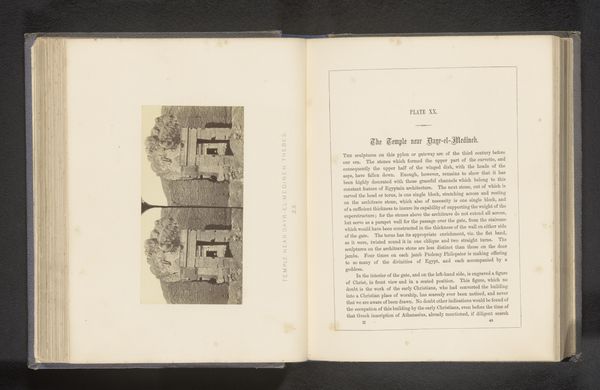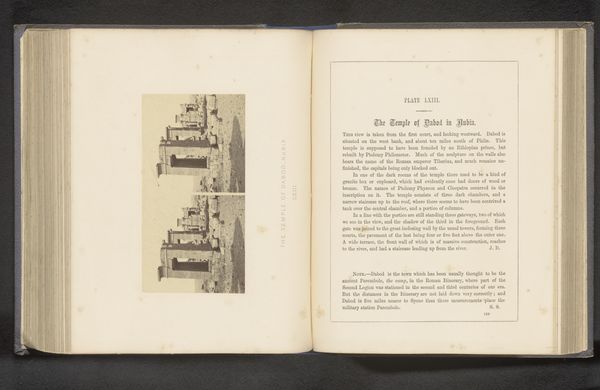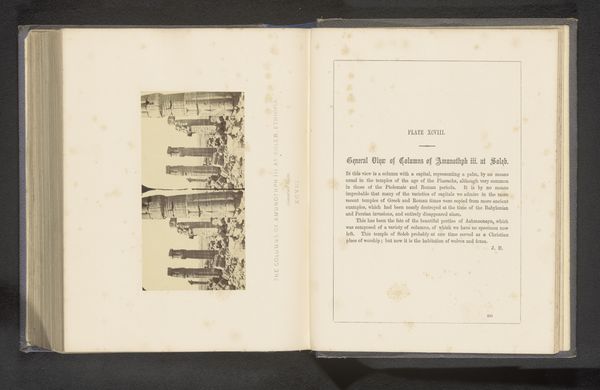
print, photography, gelatin-silver-print
# print
#
landscape
#
ancient-egyptian-art
#
photography
#
ancient-mediterranean
#
gelatin-silver-print
Dimensions: height 72 mm, width 139 mm
Copyright: Rijks Museum: Open Domain
Editor: Here we have Francis Frith's gelatin silver print, "Gezicht op de ruïnes van het tempelcomplex te Karnak," dating back to before 1862, and currently residing at the Rijksmuseum. Looking at it, I’m struck by the photograph's rather melancholic atmosphere; a documentation of faded glory, really. What do you see in this piece? Curator: Well, I immediately consider Frith’s motivations as a Western photographer in Egypt during a period of intense colonial interest. How did the very act of photographing Karnak reinforce certain power dynamics, dictating how Europe viewed Egyptian culture? The romantic, "faded glory" perspective you mentioned certainly aligns with a popular Western narrative of the time. Did Frith challenge these preconceptions, or did he cater to them? Editor: So, are you suggesting that the image might tell us less about the Temple itself, and more about how Europeans perceived it? Curator: Precisely. Consider the selection of the viewpoint – "from the Top of the Hall." Was it intended to give a sense of scale, of overwhelming grandeur? Or, conversely, did it subtly convey a sense of surveying, of claiming ownership over this ancient site? We also must consider what *wasn't* captured, the everyday Egyptian life that certainly existed alongside these ruins. Editor: I see what you mean. Focusing solely on the monumental architecture almost erases the contemporary context, unintentionally making it look uninhabited and “available.” It becomes a landscape ripe for interpretation and, possibly, exploitation. Curator: Indeed. Examining such a photograph through the lens of cultural history compels us to think about how photography itself became a tool of documentation, but also a tool of defining narratives and influencing public opinion in Europe. Editor: That gives me a completely different perspective on Frith’s photograph. It is more complex than it appears. I’ll never look at an historical photograph the same way again. Curator: And that is the power of viewing art through the lens of history. I find new meanings and perspectives, even with pieces I think I know well.
Comments
No comments
Be the first to comment and join the conversation on the ultimate creative platform.
